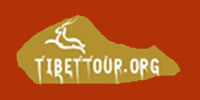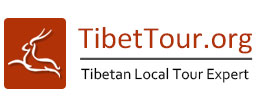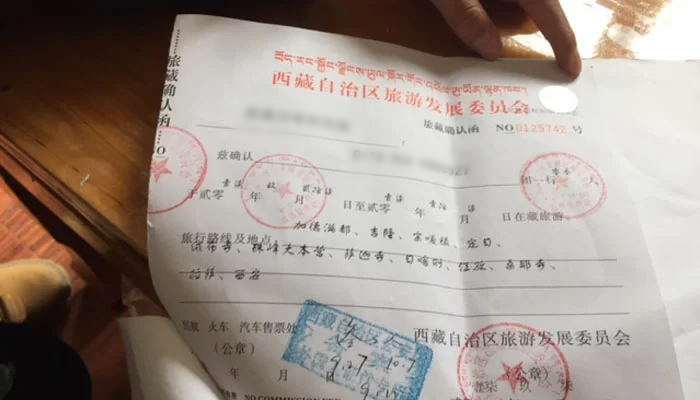Day 1: Arrival in Beijing
Welcome to Beijing! Upon arrival, our local travel guide will welcome you at the airport and escort you to your downtown hotel. After checking in, feel free to rest or explore the surroundings at your leisure.
Options for Today:
With your free time today, we suggest exploring Beijing's historic Hutongs on your own. Take a leisurely stroll through these traditional alleys in downtown areas. Popular Hutongs to visit include Nanluoguxiang, Yandaixiejie, Mao’er Hutong, Bada Hutong, and more.
Travel Tips:
Beijing boasts two international airports: Beijing Capital International Airport and Beijing Daxing International Airport. Make sure to confirm which airport you'll be arriving at before your journey.
Day 2: Beijing Tour: Mutianyu Great Wall and the Ming Tomb (B)
The Great Wall was listed as one of the world's eight wonders. Mutianyu Great Wall, known for its "graceful" appearance, offers the best quality among all sections of the Wall. Located 80km northeast of Beijing, it features 22 ancient watchtowers, approximately one every kilometer. You will hike along the ancient walls and enjoy the stunning view of the surroundings.
In the afternoon,you will discover the Ming Tomb, another UNESCO World Heritage Site in Beijing. Built in 1590 during the Ming Dynasty, it's the resting place of Emperor Shenzong and his queen. Renowned for its grand scale and spanning 100,000 square meters, it showcases the traditional layout of Ming Dynasty imperial tombs. Explore the underground palaces to gain firsthand insight into this historical marvel.
After that, go back to downtown Beijing.
Day 3: Beijing Tour: Forbidden City, Temple of Heaven and High-speed Train to Xi’an (B,L)
Today is your guided tour to the must-see places in Beijing. After breakfast, you will be collected from your hotel and head to Tiananmen Square, the first site of the day. It is the world’s largest city square.
Next, you will enter the awe-inspiring Forbidden City, boasting over 500 years of history as the residence of 24 emperors. With its staggering 9,000 rooms, though only a fraction are accessible to the public, you'll get an image of how the ancient Chinese emperors managed the country and what their daily life was like.
You'll also have the opportunity to visit Jingshan Park, situated behind the Forbidden City. Ascend to the hilltop within the park for a breathtaking panoramic view overlooking the entirety of the Forbidden City.
For lunch, indulge in the renowned Beijing Roast Duck. Accompanied by thin pancakes, spring onions, and sweet bean sauce, this traditional dish promises a delightful fusion of flavors and textures.
In the afternoon, you will go to visit the Temple of Heaven, located 6 kilometers from the Forbidden City. This sacred site served as a place where ancient Chinese emperors worshipped the sky, offering prayers for rain, prosperity, and peace for the country and its people.
After the tour, you will be dropped off at the train station to board the overnight high-speed train to Xi’an. The high-speed train journey from Beijing to Xi’an lasts approximately 12 hours. During the trip, you'll enjoy the modern sleeping cabins aboard China's high-tech bullet train.
Day 4: Xi’an Tour: Terracotta Army, the Big Wild Goose Pagoda, and Weiyang Palace (B)
Upon your arrival in Xi’an, your local guide will greet you at the railway station and escort you to your hotel. After checking in and taking a brief rest, you will start exploring the city of Xi’an.
You will first go to visit the famous Terra-Cotta Warriors, which is one of the eight wonders in the world. These terracotta warriors and horses are the size of a real army, and were buried alongside the Emperor in a vast underground palace.
Then, you will head for Big Wild Goose Pagoda, also known as Dayanta. The Buddhist scriptures and figurines of the Buddha brought by Xuanzang are reserved here.
At the end of the day, you will visit the Weiyang Palace Relics Park. This palace, built in 200 BC, was China's second imperial palace. It's the oldest of all Chinese palaces and also marks the start of the Silk Road in the east.
Travel Tips:
An additional fee of 30 RMB is required for entrance and access to climb the Big Wild Goose Pagoda.
Day 5: Board the Tibet train to Lhasa
Today, you will be transferred to Xi’an Railway Station for train to Lhasa. Please be sure to arrive in train station at least 1 hour before the train departure. You need present your passport and Tibet Travel Permit to board the train.
Tibet Permit Notice:
1. When you book your trip with us, we'll take care of getting your Tibet Travel Permit.
2. It's best to book and send us the required documents at least 20 days before your trip.
3. Your travel permit will be sent to you before your train departs. Make sure to keep it safe.
Day 6: Scenery along the Qinghai-Tibet Railway and Arrive in Lhasa
Today, you are going to witness the most beautiful scenery of the Qinghai-Tibet Railway. Along the way to Nagchu, you will see Tanggula Pass come and go, almost indistinguishable from the rest of the highland. You may notice villagers gazing at the passing train and yaks darting off the tracks. Up here, every few minutes, another range of snow-capped peaks with glaciers streaming down their sides appears on the horizon.
Upon arrival in Lhasa, you will be greeted by local guide at the train station and then be transferred to your hotel in downtown Lhasa. Along the way, you can enjoy the spectacular scenery of Yarlung Tsangpo River, Lhasa River, and the typical Tibetan villages.
After arriving at the hotel, take some time to rest and acclimate to the high altitude. It's helpful to take it easy for the first few days and remember to stay hydrated by drinking water.
Later in the afternoon or evening, your guide will welcome you with traditional Tibetan gifts, provide travel guidance, and introduce you to the other members of your group.
Warm Tips:
If you require any assistance or have specific needs, please don't hesitate to visit our service center located at Gangjian Hotel.
Day 7: Lhasa Day Tour: Drepung Monastery and Sera Monastery (B, D)
Today, you will first visit the Drepung Monastery, the largest monastery in Tibet that once housed over ten thousand monks. Here, you'll explore the Coqen Hall, where your guide will provide a detailed explanation of the Tibetan Buddhist worldview and narrate the stories of renowned figures in Tibetan Buddhist history.
Additionally, you'll tour the Loseling College (or an equivalent) within Drepung Monastery to understand monks' practices and studies. Exploring their dormitories will offer insight into their daily routines and living conditions.
In the afternoon, the tour proceeds to Sera Monastery, established in 1419 and long regarded as a significant Buddhist seminary. Here, you'll observe the renowned monk debates, a highlight of Sera Monastery. Your guide will provide a comprehensive explanation of how these debates aid monks in acquiring knowledge and advancing through academic degrees.
After today's sightseeing, enjoy a welcome dinner with your fellow group members.
Stay overnight in Lhasa.
Day 8: Lhasa Day Tour: Potala Palace, Jokhang Temple & Barkhor Street (B)
After breakfast, your guide will accompany you to visit the magnificent Potala Palace, where you'll stand atop its heights and gaze down upon the city of Lhasa. Your guide will narrate the life and tales of the successive Dalai Lamas within the Potala Palace and meticulously introduce the various halls and treasures housed within its walls.
Once you've explored the grandeur of the Potala Palace, your next stop will be Longwangtan Park nestled at its base. This tranquil spot offers a unique vantage point to admire the majestic Potala Palace and partake in traditional Tibetan cultural experiences.
In the afternoon, you'll head to the sacred Jokhang Temple—the heart of Tibetan faith and life. Within the temple resides the rare and revered 12-year-old statue of Shakyamuni Buddha, an image so lifelike that it resembles seeing the Buddha in person. Around the temple is Barkhor Street, where you can take a clockwise kora, witnessing how local Tibetans practice their Buddhist beliefs.
Following this, your guide will take you to the liveliest indoor Tibetan tea house in Lhasa, where you can enjoy Tibetan sweet tea with locals. Your guide will join everyone, sharing insights into the social relations and daily leisure life of Tibetans.
Stay overnight in Lhasa.
Day 9: Lhasa - Gyantse - Shigatse (B, L)
After exploring Lhasa, you'll travel overland to Shigatse, Tibet's second-largest city. Along the way, immerse yourself in Tibet's splendid scenery and discover the leisurely lives of local villagers.
The first stop will be at Yamdrok Lake, one of the three holiest lakes in Tibet. This stunning lake unveils its beauty from the Gambala Mountain Pass (4790m), curving like a blue ribbon, while the towering Mt. Noijin Kangsang (7191m) can be seen in the distance. As you descend to the lakeshore, explore various viewpoints offering intimate encounters with the lake's shoreline. Towards the lake's end, you'll have the opportunity to visit a welcoming local family in the village and have lunch with them.
Next, you'll pass by the Karola Glacier (5100m). Positioned right by the roadside, it resembles a serene maiden grooming herself while gazing from afar at the majestic snow-capped mountains.
Continuing your journey towards Gyantse, you'll make a stop at Simila Mountain Pass. Here, you can hang prayer flags, offering prayers for global peace and the well-being of your loved ones.
Upon arrival in Gyantse, seize the opportunity to capture memorable photos of the ancient city. En route from Gyantse to Shigatse, you will witness vast stretches of lush green barley fields (in summer) and golden fields (in autumn), alongside numerous farms.
Finally, upon reaching Shigatse and checking into the hotel, take a moment to relax and prepare for the upcoming trip to Mount Everest the following day.
Stay overnight in Shigatse.
Day 10: Shigatse to Everest Base Camp (B)
In the morning, you will set off towards Mount Everest after breakfast. Beginning with the Gyatsola Pass (5280m), the viewpoint offers your first glimpse of Mount Everest. Veiled within the mountain range, Everest resembles a budding lotus flower, a captivating sight along the roadside.
Continuing into Mount Everest National Nature Reserve, the Gawula Pass (5198m) presents a panoramic view of the Himalayas. Here, you will see the breathtaking lineup of the five world's highest peaks in the Himalayan range, all towering above 8000 meters. This is your second glimpse of Mount Everest.
Then traverse the new winding road toward Everest Base Camp (5200m), each turn reveals a closer perspective of the majestic Everest, gradually unfolding before you. This marks your third view of the Everest.
Upon arrival at Everest Base Camp, the huge white pyramid peak stands tall before you. As dusk approaches, the setting sun casts warm golden hues upon Everest's northern face—your fourth view.
As night descends, the glistening Milky Way alongside the snow-white peak of Mount Everest offers your fifth and final encounter with the majestic peak.
Stay overnight at Everest Base Camp or in the nearby village if the EBC tent hotels close during the winter season.
Warm Tips:
1. Everest Base Camp sits at an altitude of 5200 meters, and it's common to experience headaches and difficulty sleeping at night due to altitude. This is a normal occurrence, so there's no need to panic. Continue to take it slow, relax, and savor the beauty of Everest. The symptoms will gradually ease.
2. The visibility of Mount Everest depends on weather conditions and cannot be assured.
3. From November to March, the tent hotels at Everest Base Camp usually close. Hence, if you're traveling during this period, your accommodation choices are restricted to the nearby village near EBC.
Day 11: Everest Base Camp to Gyirong Border (B)
Today, you will travel from Everest Base Camp to the Sino-Nepal border at Gyirong Port, and marvel at the incredible landscape along the way.
Before departing from EBC, you'll enjoy the graceful sunrise of Mount Everest, and hike to the world's highest monastery, Rongbuk Monastery (5154 meters). This Tibetan Nyingma monastery sits in close proximity to Mount Everest and is a place where nuns and monks reside together.
Then, you will traverse the Himalayas, driving towards Gyirong Port (2800 meters). It is a lengthy road with a scenery change from the high plateau to a lower valley. You will pass by the Shishapangma Peak (8027 meters) and the serene Lake Paiku Tso, and be mesmerized by the tranquil and harmonious beauty. As the altitude rapidly descends upon entering the edges of the Himalayas, you'll be captivated by forests, waterfalls, and seemingly bottomless gorges.
Upon reaching Gyirong Valley, you'll behold dense forests with snow-capped peaks rising above. In Gyirong Town, you can deeply inhale the abundant oxygen in the low forests as you bid farewell to Tibet here.
Stay overnight in Gyriong.
Day 12: Gyirong Border - Kathmandu (B)
In the morning, bid farewell to your Tibetan guide and driver. Our staff at the Nepal border checkpoint will welcome you, assist in arranging the handling of your large luggage (additional fee required), help with your Nepalese visa procedures, and ensure your safe transfer in our private car, all the way to your hotel in Kathmandu.
After entering Nepal, you'll encounter numerous snow-capped mountains along the southern Himalayan foothills, such as Gaurishankar Himal (7,134 meters), Ganesh Himal (7,422 meters), Annapurna Range's Annapurna III (7,555 meters), Lamjung W (6,983 meters), Mount Kanguru (6,981 meters), Himchuli West (6,441 meters), Ngadi Chuli (7,871 meters), and Gaurishankar (7,181 meters).
Due to challenging road conditions, we won't make many stops along the way. But you will feast your eyes on the breathtaking landscape along the way, and enjoy the final gift the Himalayas have in store for you.
Day 13: Kathmandu Tour: Durbar Square, Patan, and Swayambhunath (B, D)
After breakfast, you will go to visit Kathmandu’s Durbar Square. Durbar Square is one of three durbar (royal palace) squares in the Kathmandu Valley. It is the site of the Hanuman Dhoka Palace Complex, which was the royal Nepalese residence until the 19th century and where important ceremonies taken place.
Next, stroll through the narrow streets of Patan, the second largest town in Kathmandu valley. Here you'll encounter ancient temples and admire the intricate wood, metal, and stone carvings on the surrounding buildings, immersing yourself in the charm of the "City of Fine Art".
Finally, visit the Swayambhunath Temple, also known as the Monkey Temple. It sits atop a hill overlooking the Kathmandu Valley, offering fantastic views of the city. The golden spire of the 5th-century Swayambhu Stupa is adorned with a colorful array of fluttering prayer flags.
At the end of the day, you will enjoy dinner at a local restaurant in Kathmandu, where you can sample traditional dishes such as Momo (dumplings) and Dal Bhat (a Nepali platter consisting of rice, curries, and local sweets).
Stay overnight in Kathmandu.
Day 14: Kathmandu Tour: Changunarayan, Bhaktapur, Pasupatinath, and Bouddhanath (B)
In the morning, you'll begin by visiting Changu Narayan, the oldest Hindu temple in Nepal. This UNESCO World Heritage Site is famed for its stunning architecture and intricate carvings.
Then, go to visit Bhaktapur, the medieval city located in the east corner of Kathmandu Valley. Serving as the political, religious, and cultural hub of Nepal from the early 13th century to the 18th century, this small town has preserved its medieval charm for over 700 years. The ancient palaces, temples, and local residents provide a distinctive glimpse into Nepalese town life.
After that, continue to visit Pashupatinath, the most important Hindu temple in Nepal, had its old buildings destroyed by Muslim invaders in the 14th century, with its stone linga smashed to dust. However, it rose again behind their retreating backs. Succeeding monarchs reinstated the temple and its images.
In the end, you will visit the Bouddhanath (Boudha Stupa), which is among the largest stupas in South Asia and has become the focal point of Tibetan Buddhism in Nepal. The white mound looms thirty-six meters overhead. Located on the ancient trade route to Tibet, Tibetan merchants rested and offered prayers here for many centuries.
Stay overnight in Kathmandu.
Day 15: Pokhara Sightseeing: Phewa Lake, Annapurna
After breakfast, depart for Pokhara from Kathmandu to do the sightseeing in Pokhara city. The World Peace Pagoda can be seen on top of a hill on the southern fringe of Phewa Lake. It has four images of the Buddha facing the four directions. The dome-shaped pagoda is an impressive sight, and its hilltop location commands a great view. It is a great vantage point which offers spectacular views of the Annapurna.
In the afternoon, do the boating at Phewa Lake. The center of attraction in Pokhara is the Phewa Lake - the second largest lake in the Kingdom. It is the largest and most enchanting of the three lakes that add to the resplendence of Pokhara. Here, one can sail or row a hired boat across to the water or visit the island temple in the middle. The favorite home base for travelers is the eastern shore.
Stay overnight in Pokhara.
Day 16: Pokhara to Chitwan (160km, 5-6 hours)
Chitwan - from alleys of the Valley to lush greenery, get ready to treat all your senses at Chitwan, the heart of the jungle. From being surrounded by the concrete jungle to entering the real jungle, this package has extremes to get you in adventure mode. From making way through the narrow gallis of Kathmandu and discovering architectural delights, you will be walking or riding through the jungle along with the wild animals you will discover by the Rapti River.
Stay overnight in Chitwan.
Day 17: Chitwan Jungle Park Exploration
Early morning you will visit the Jungle to refresh your spirit of adventure on a guided walk through the national park, returning to the lodge in time for breakfast.
You will follow a full day true jungle experience with the in-house expert naturalists including Bird watching, Elephant bathing and canoeing. You will also visit the small village of Tharu ethnic group to get a sense of what their world and lives are like through interactions with the locals.
A special sundowner can be suggested at the confluence of the Rapti River amidst spectacular sunset view.
Stay overnight in Chitwan.
Day 18: Chitwan to Lumbini: Lumbini Garden
After breakfast, you will travel overland from Chitwan to Lumbini, the birthplace of Lord Buddha, where has been revered as the place of holy pilgrimage. Lumbini has been included as a World Heritage Site by UNESCO.
Upon arrival, you will go walking through the Sacred Lumbini Garden where the Buddha was born converges on the Ashoka pillar. Visit the Maya Devi Temple with its bas-relief sculpture depicting Maya Devi holding on with her right hand to a branch of pipal tree and giving birth to the infant Buddha who stand up on a lotus pedestal.
Stay overnight in Lumbini.
Day 19: Tilaurkot Sightseeing
After breakfast, begin the trip by driving away 27km west of Lumbini to visit the important archaeological site, Tilaurkot, the ancient palace of King Suddodha (Siddhartha Gautam's father), where the Buddha spent his formative years as a Shakya Prince. Allow yourself for a moment to wander around and soak the atmosphere. There's a museum nearby, the Kapilvastu Museum; the pottery, jewelry and ornaments are gathered in-house.
End up the remarkable tour in Tilaurkot by visiting the shrines, monasteries and stupa near the sacred garden.
Stay overnight in Lumbini.
Day 20: Lumbini Back to Kathmandu
In the morning, leave Lumbini by road and drive back to Kathmandu. Check-in at hotel, the rest of the day is at your own leisure.
Stay overnight in Kathmandu
Day 21: Departure from Kathmandu
Our guide will transfer you to the Kathmandu airport and help you get on board.














































































